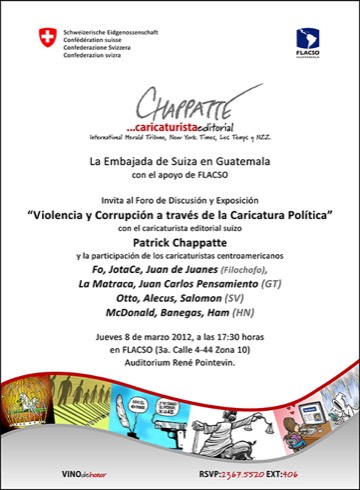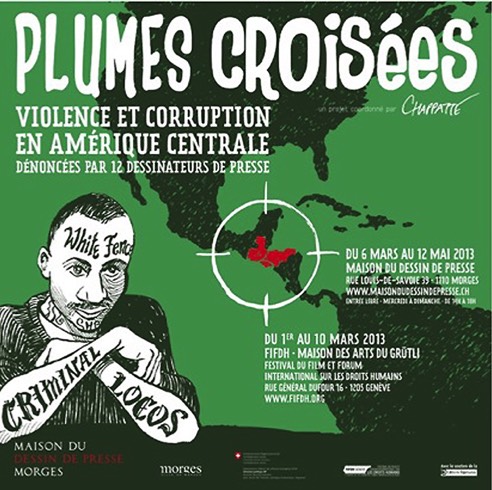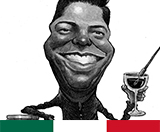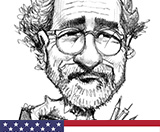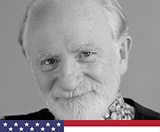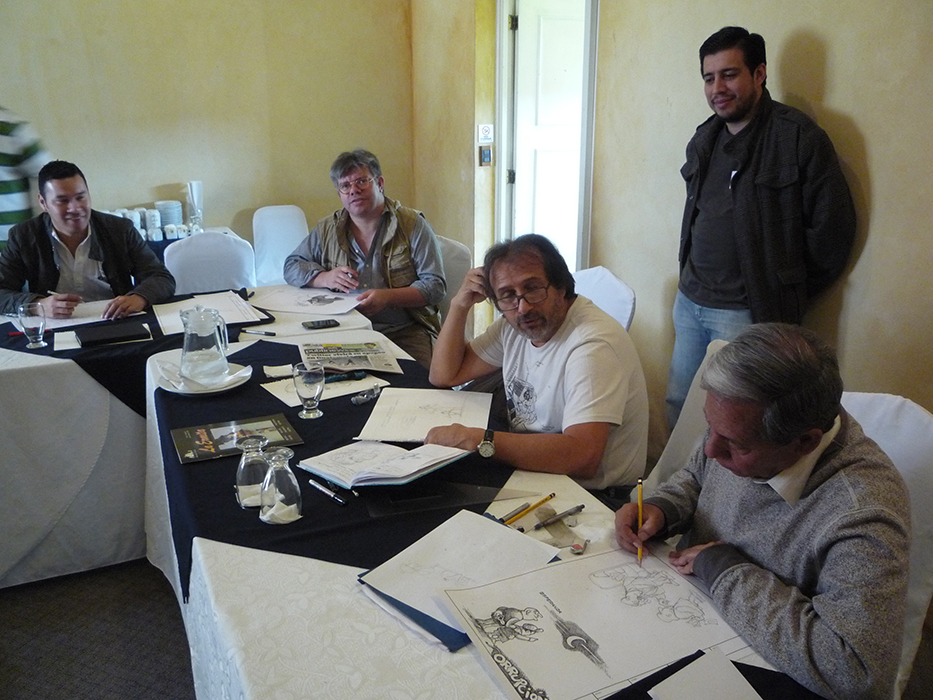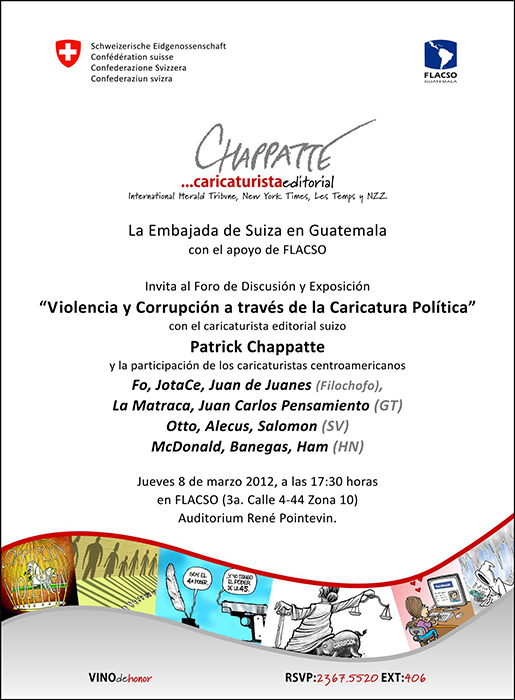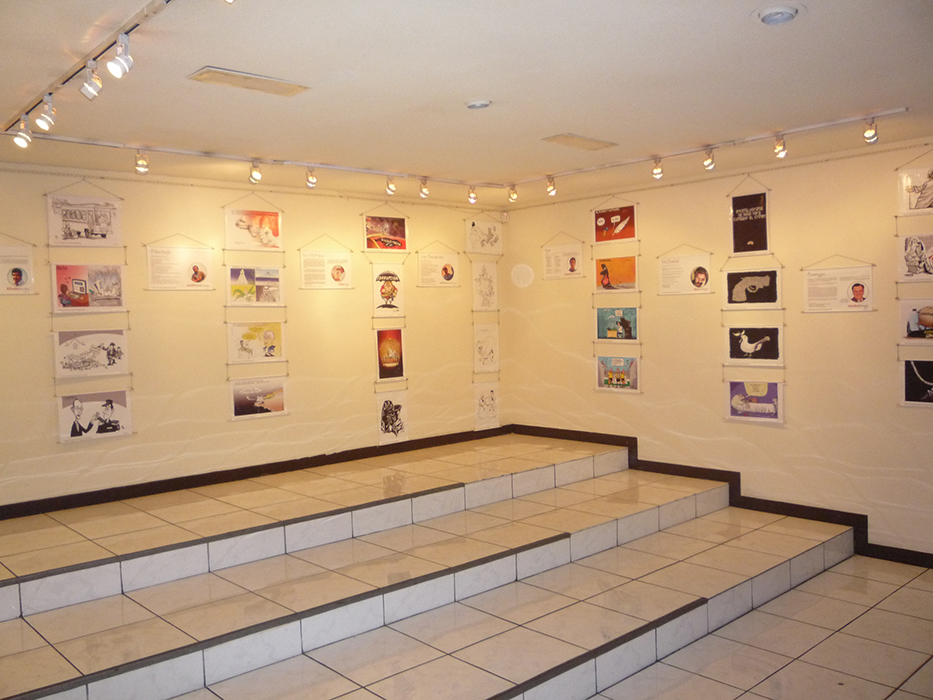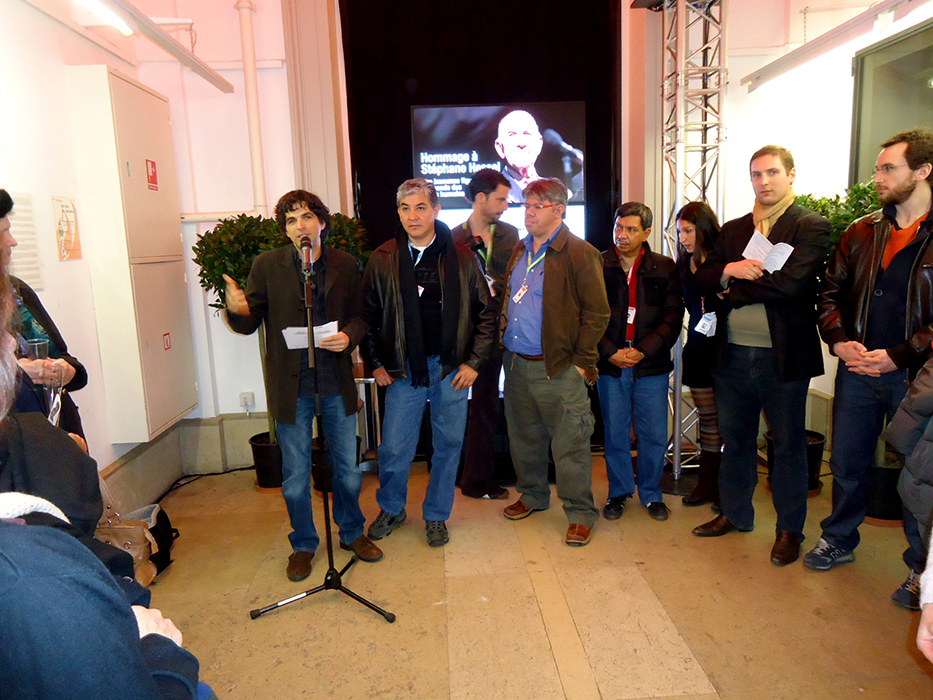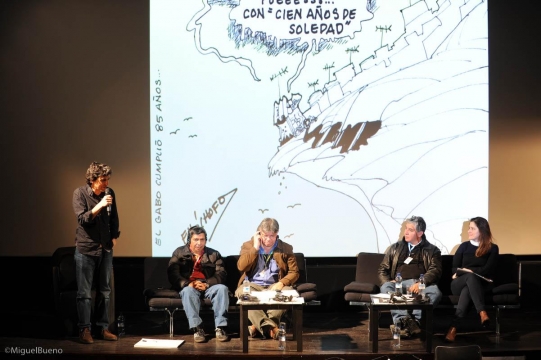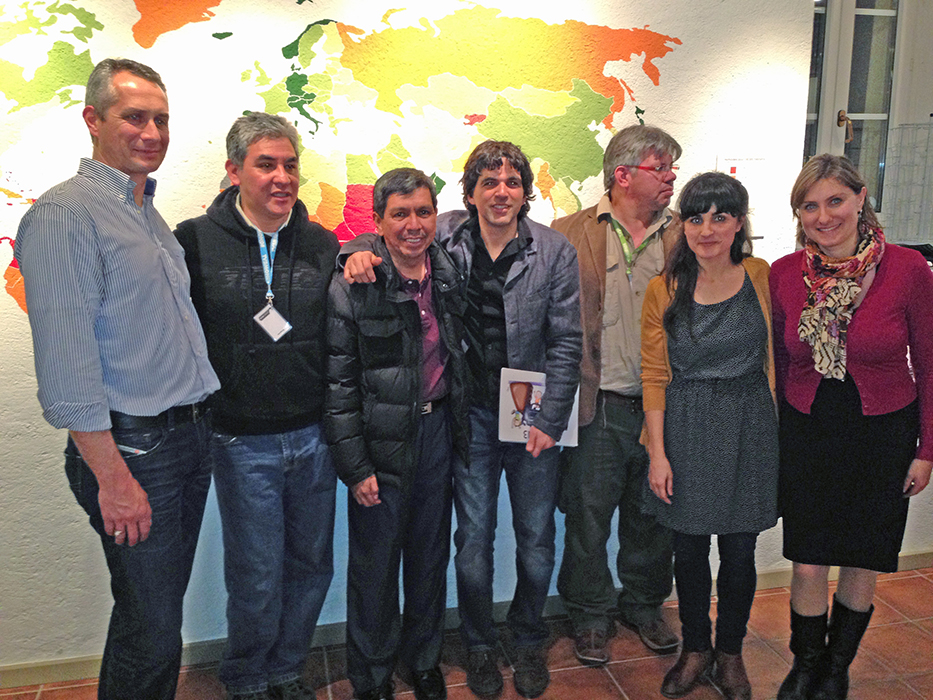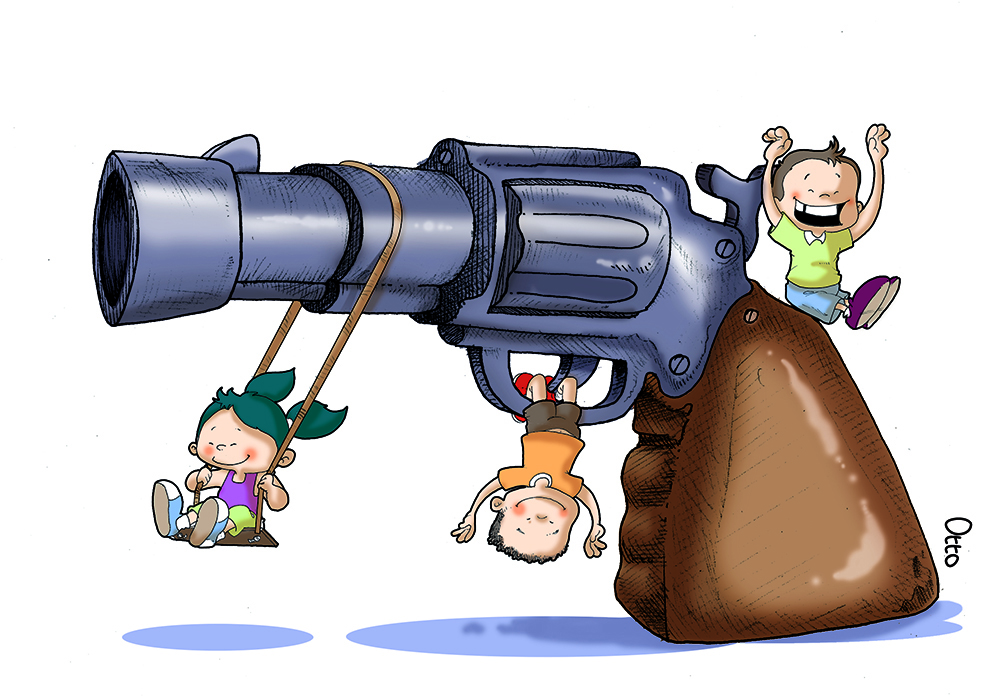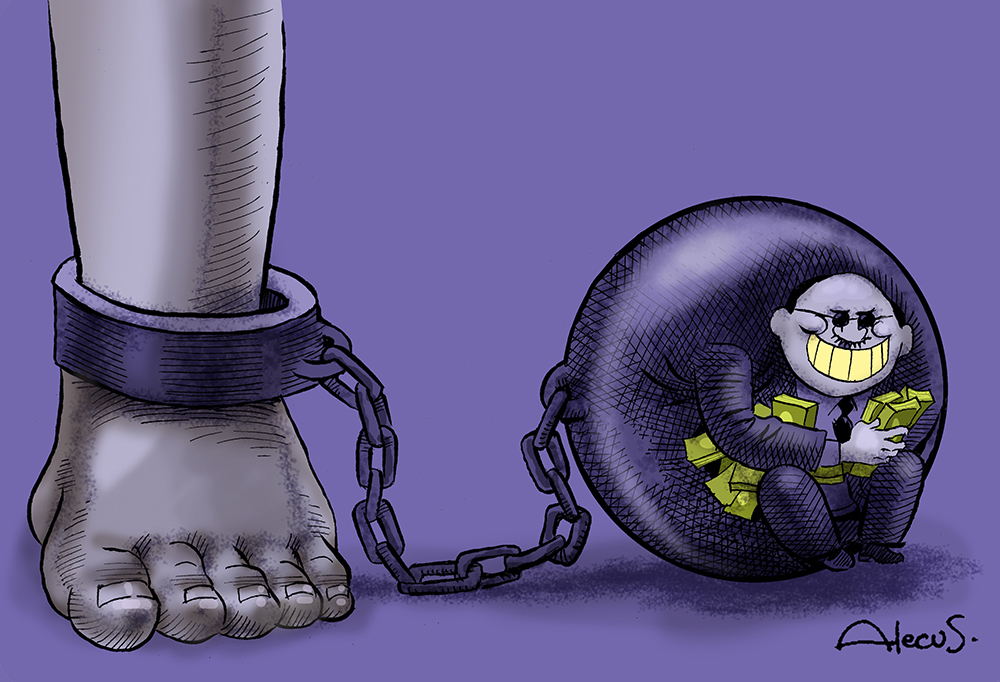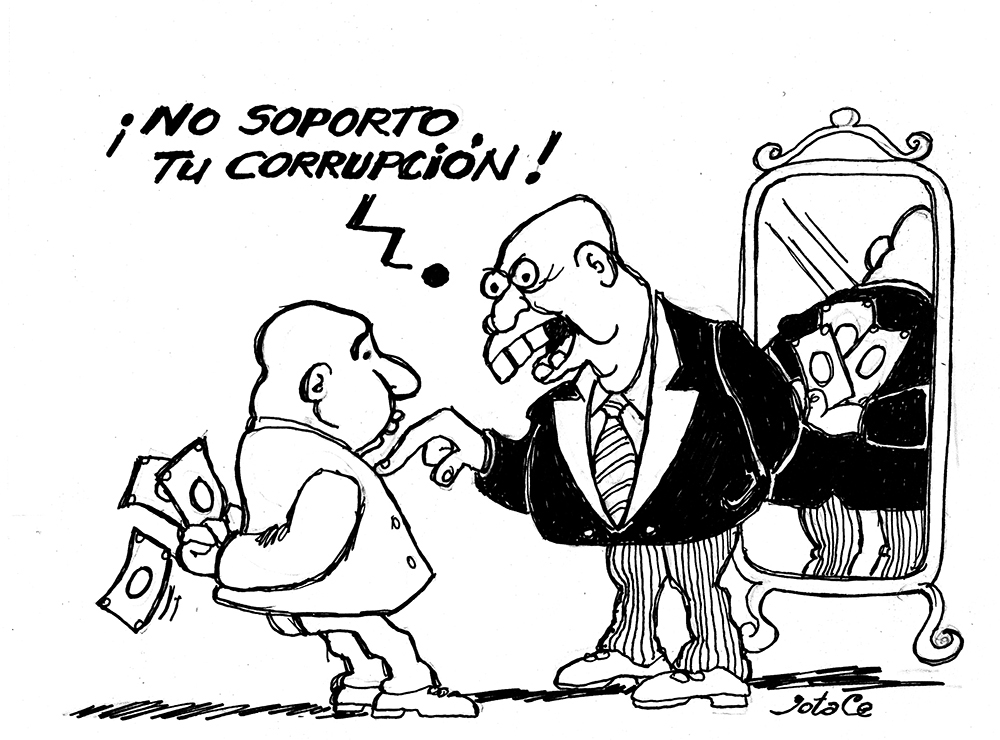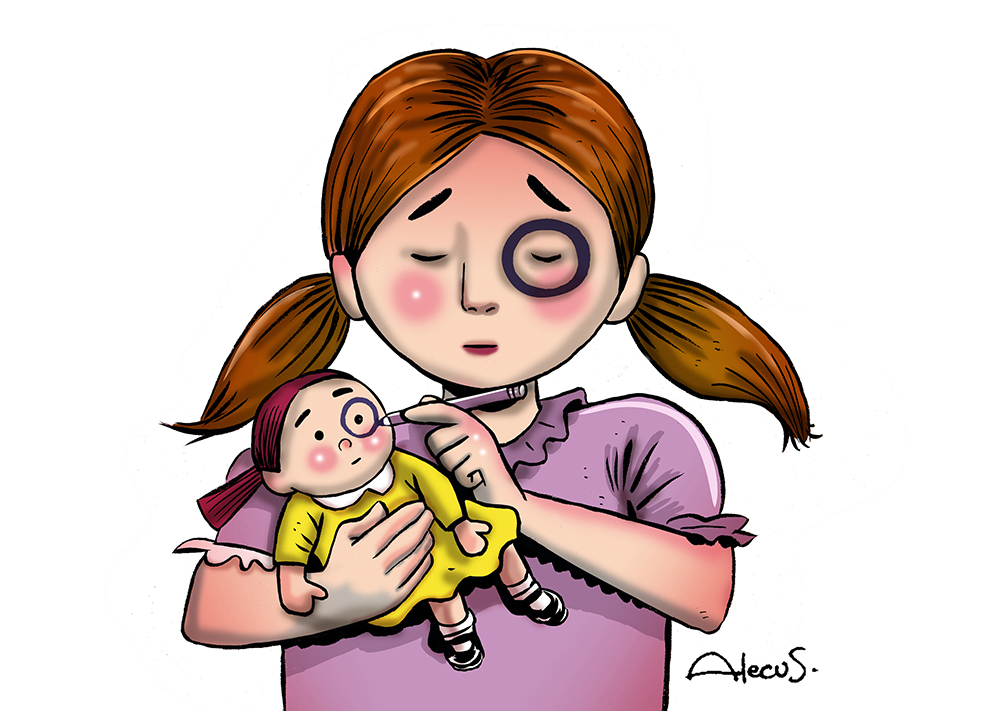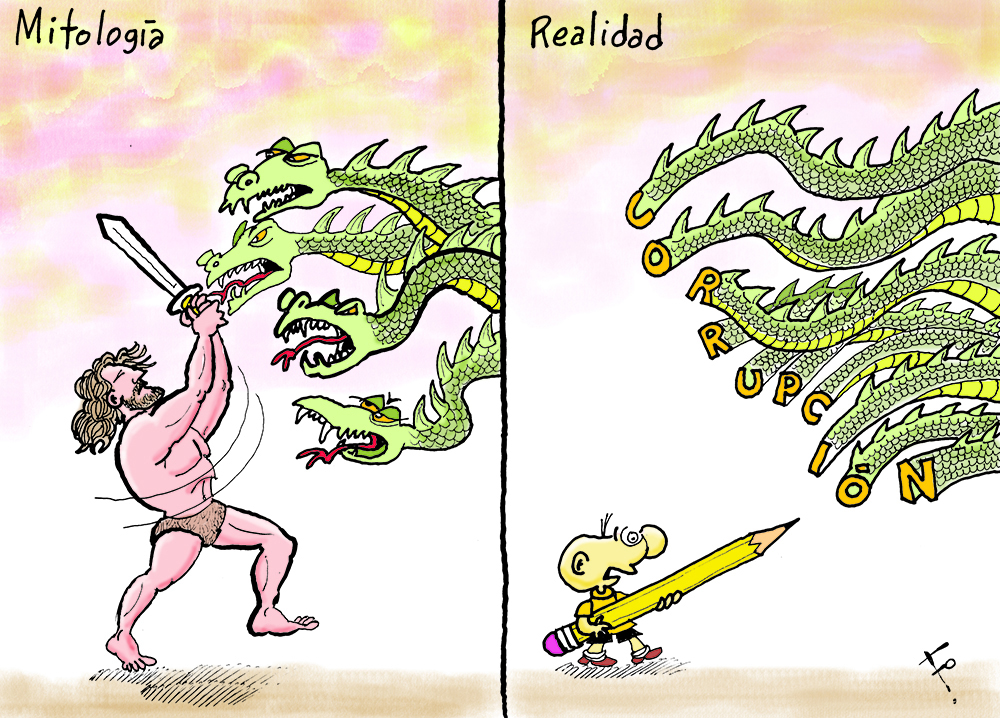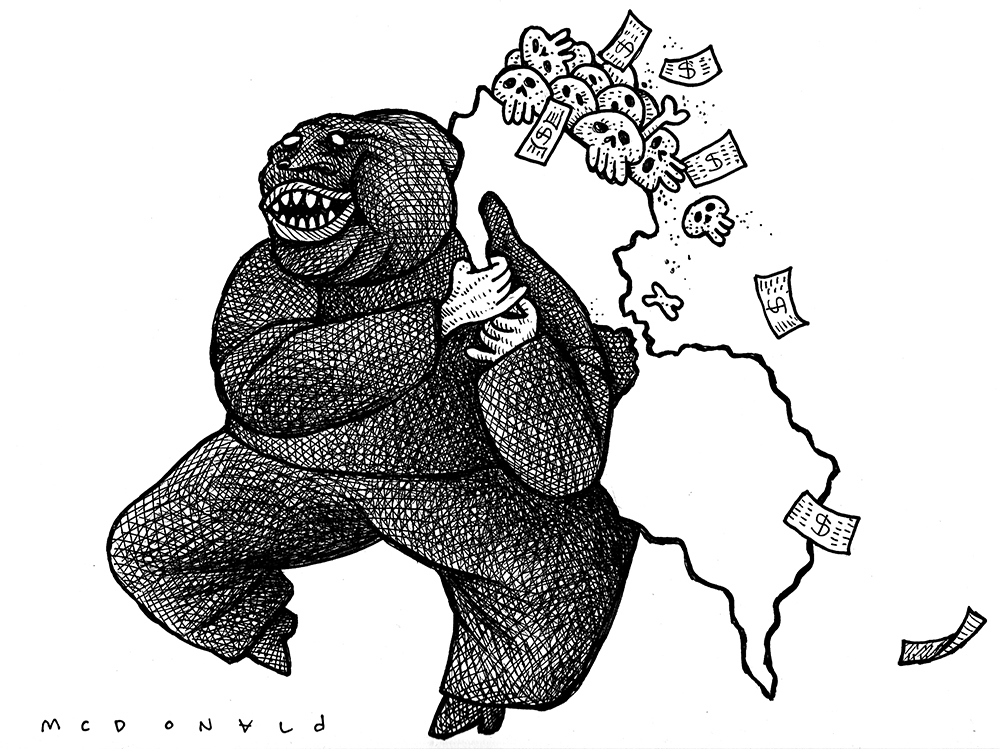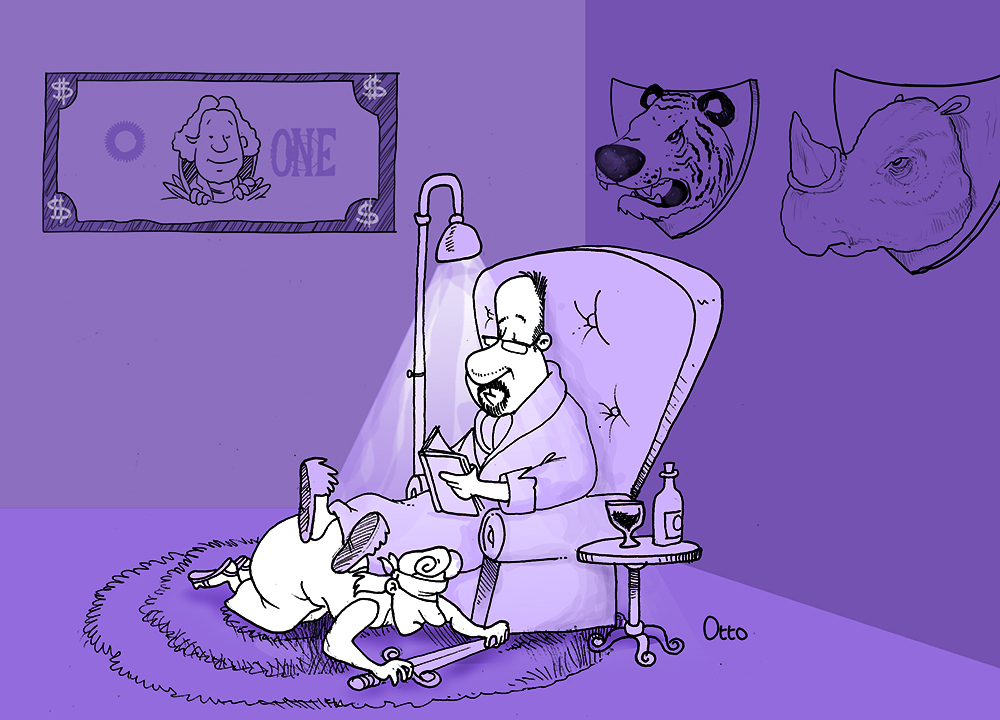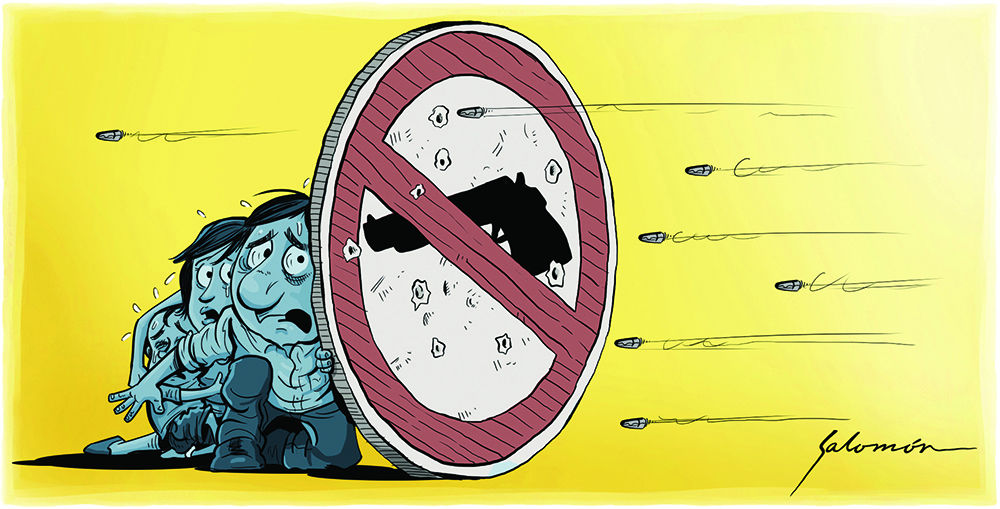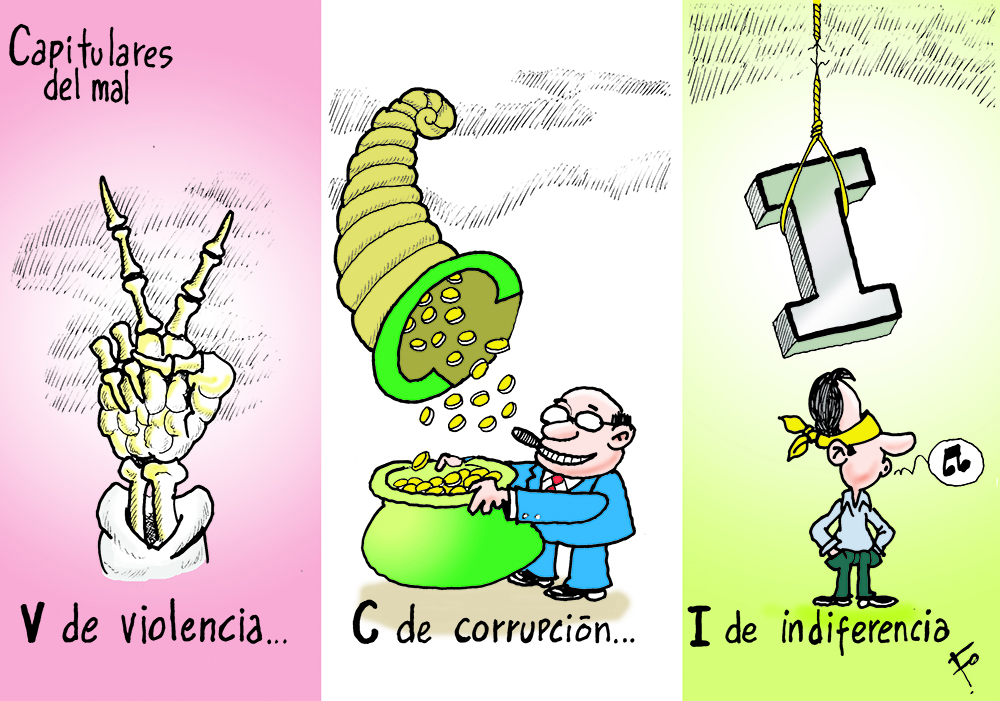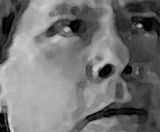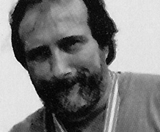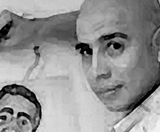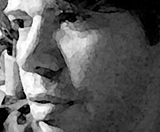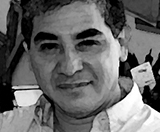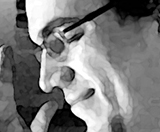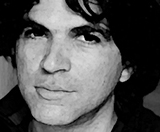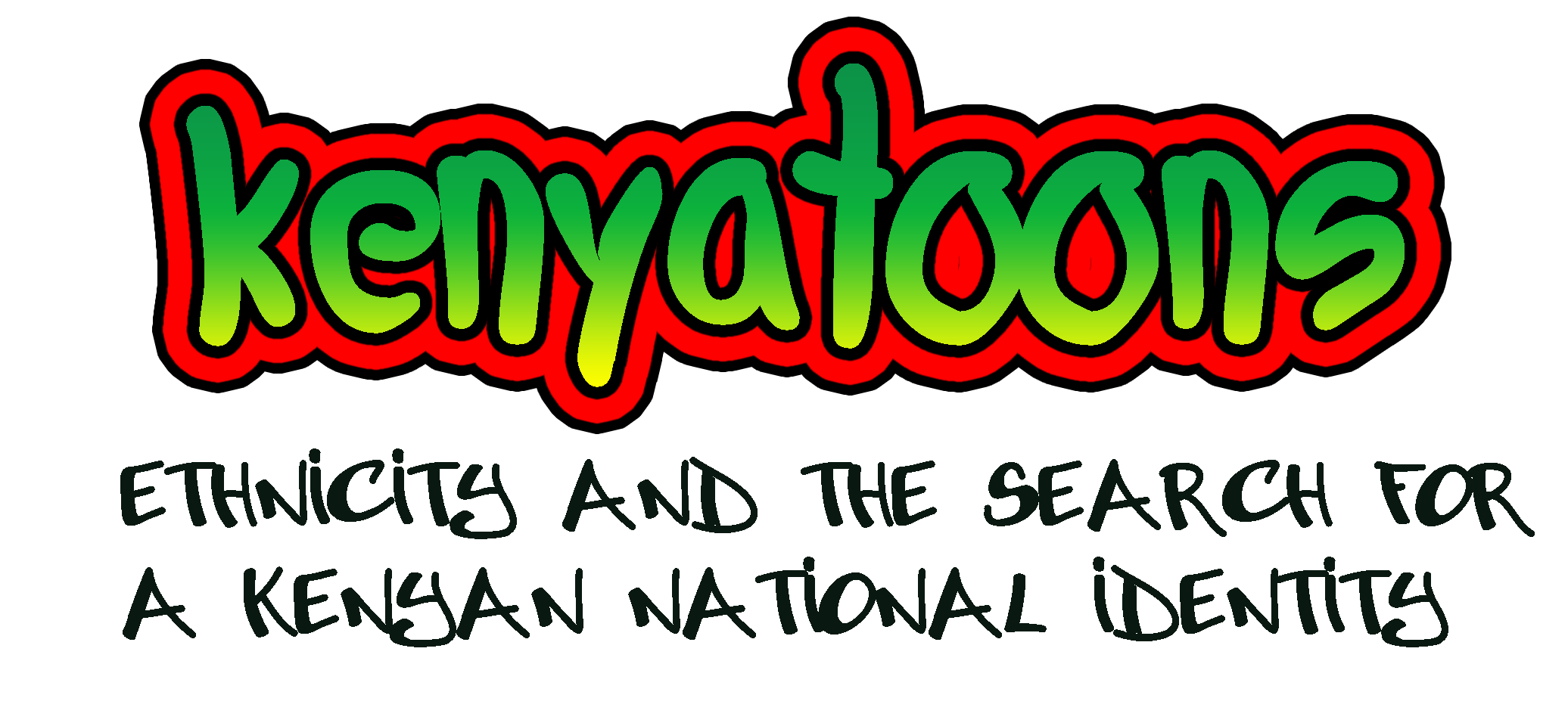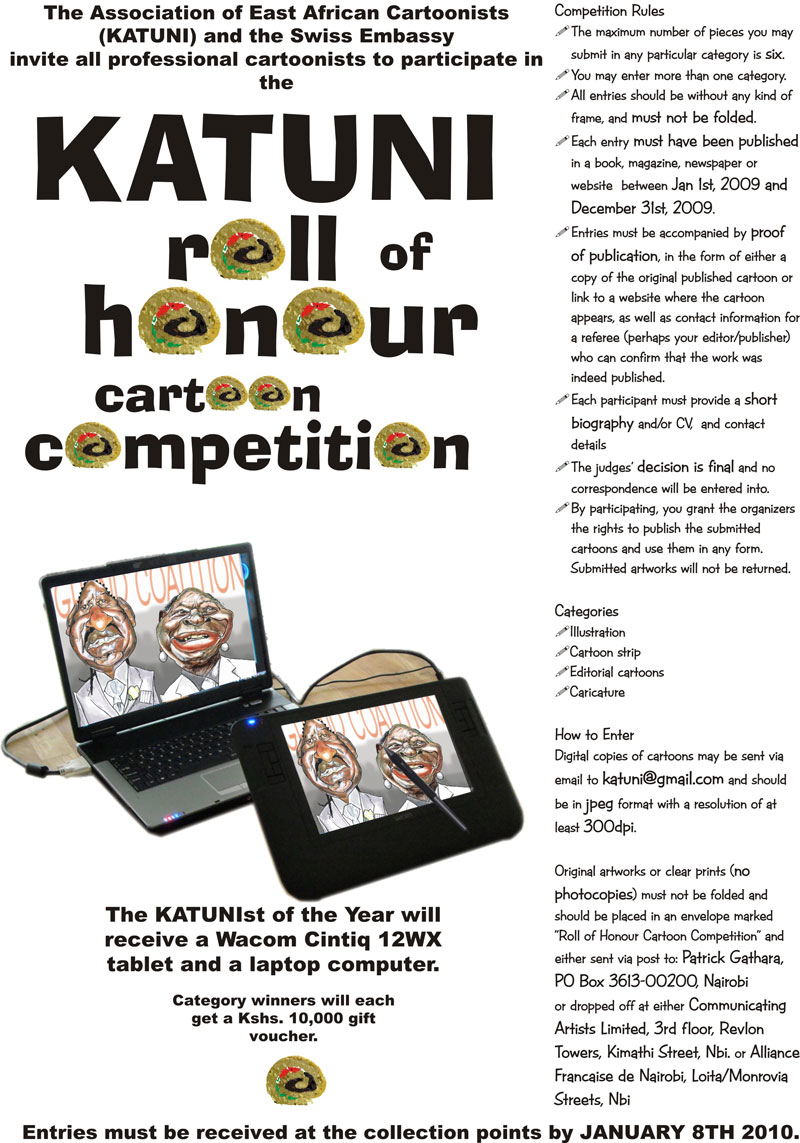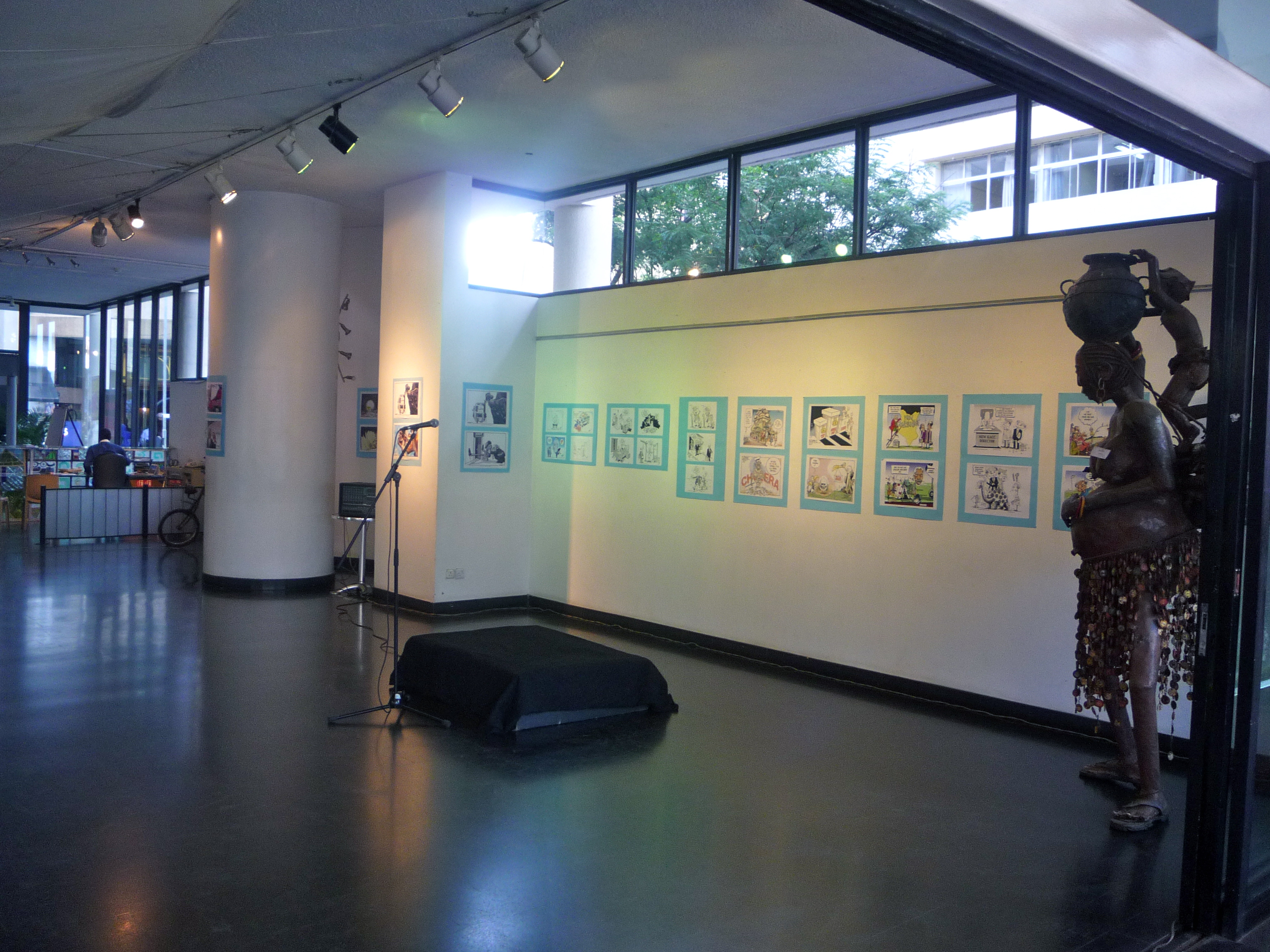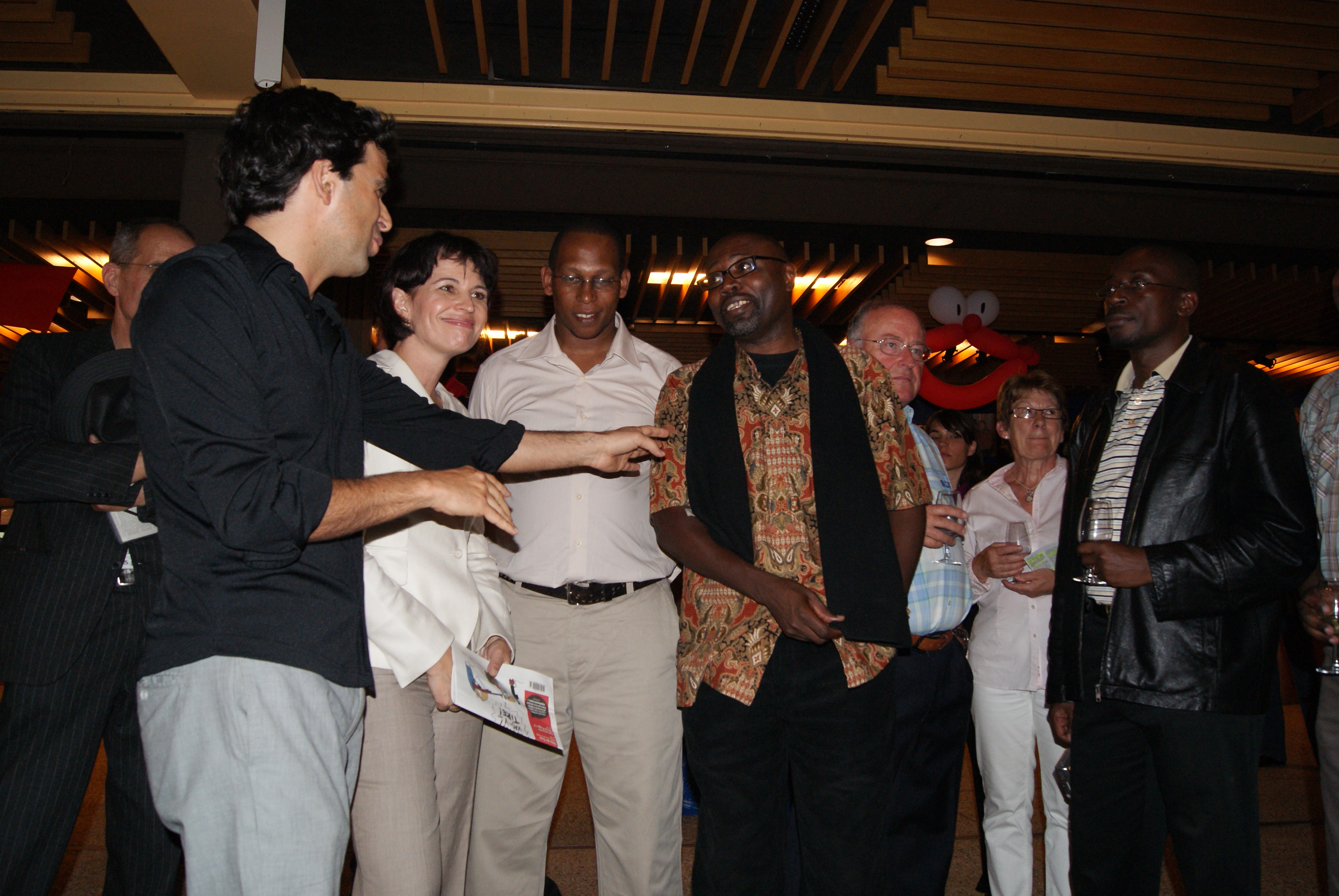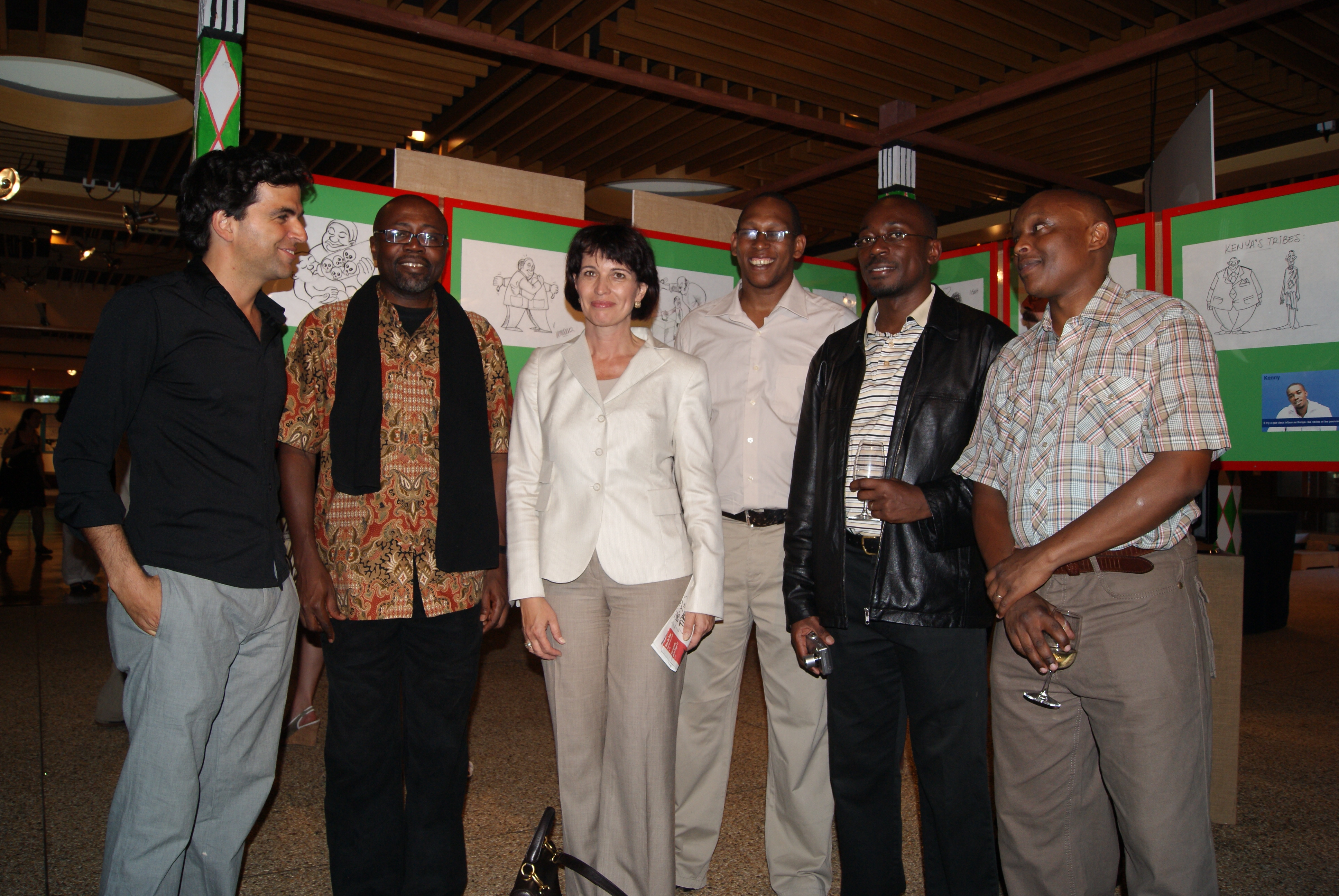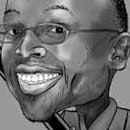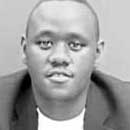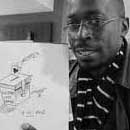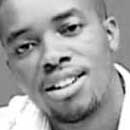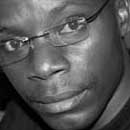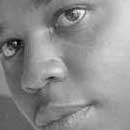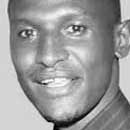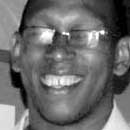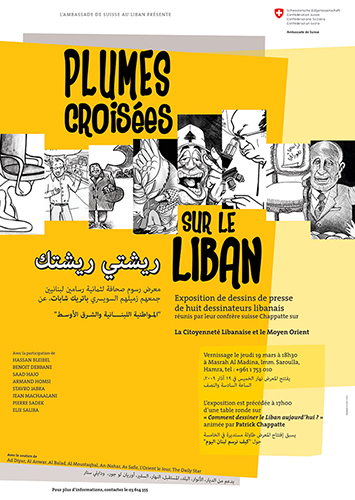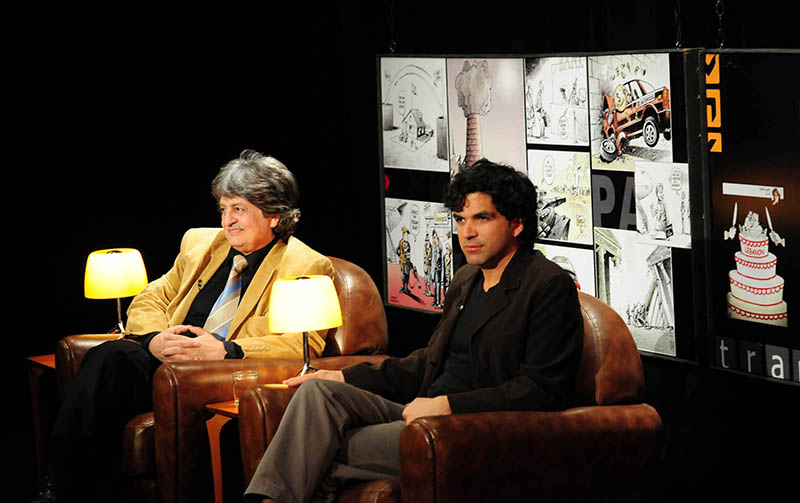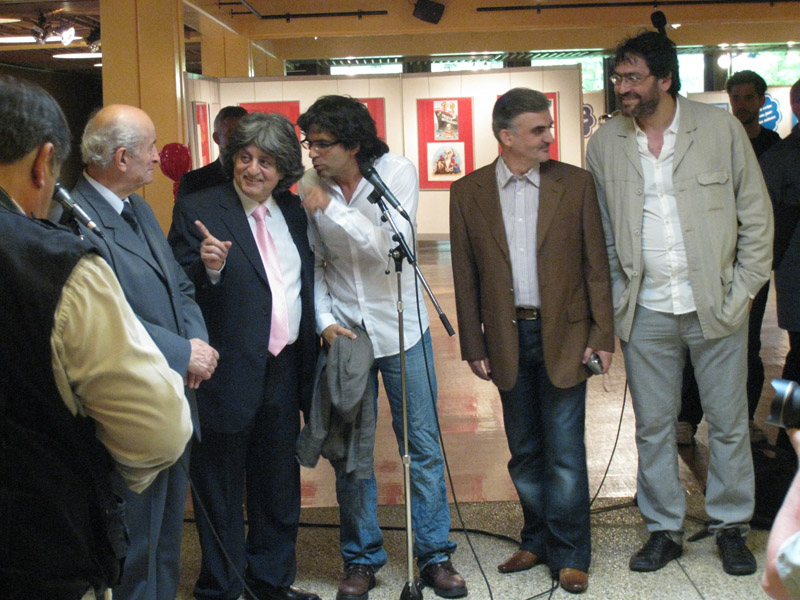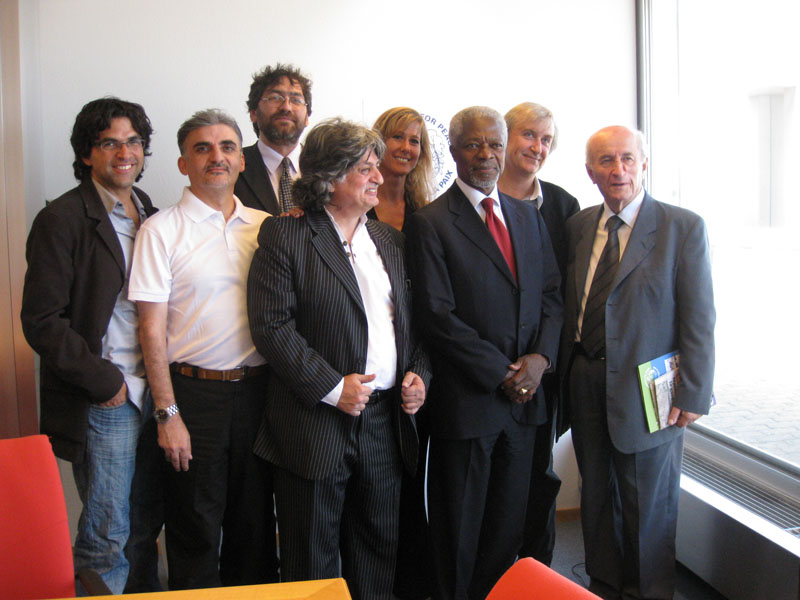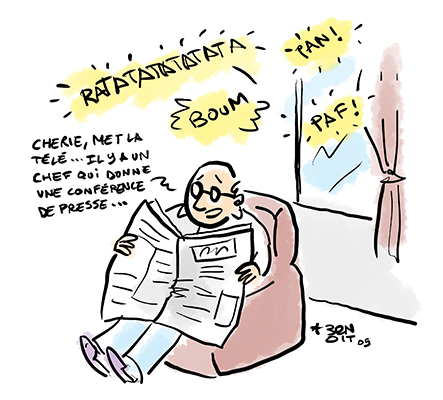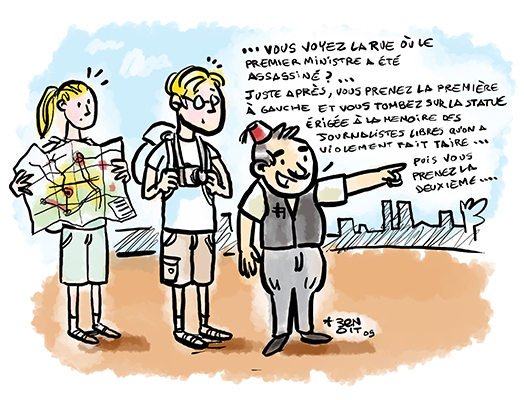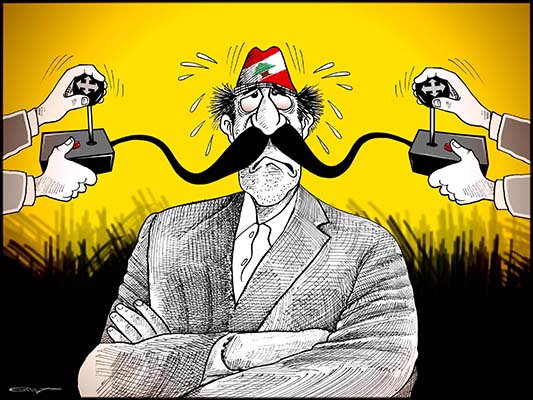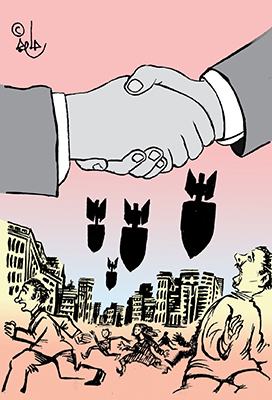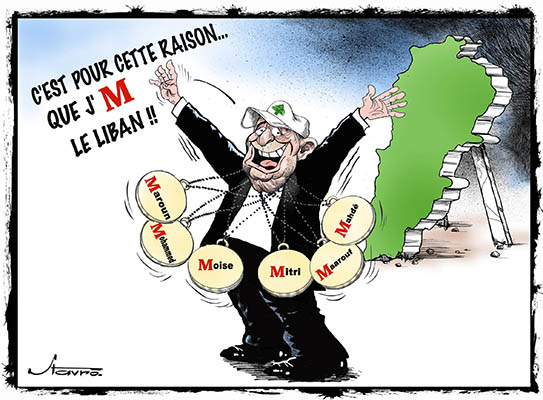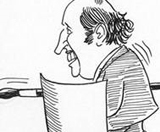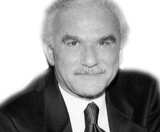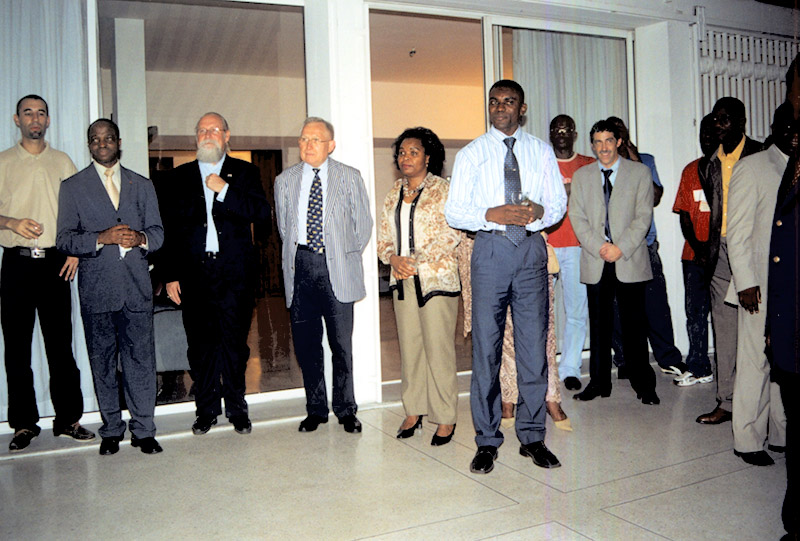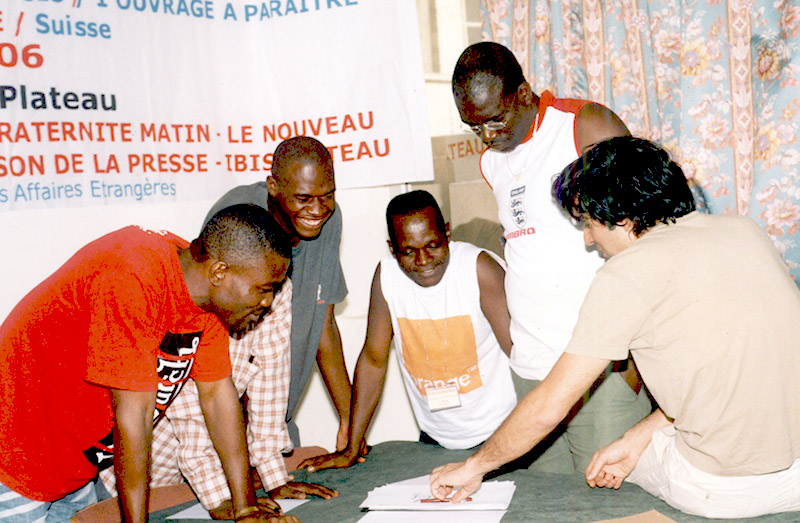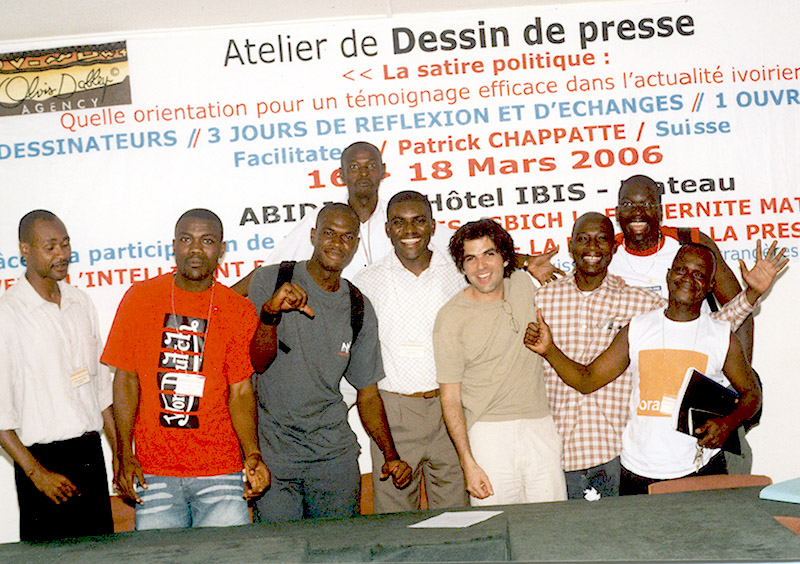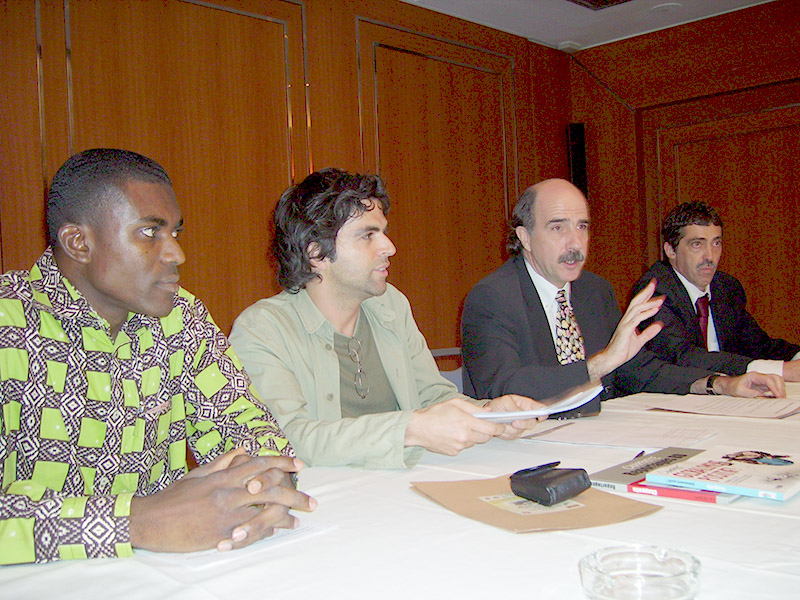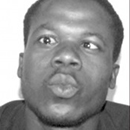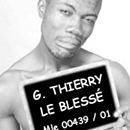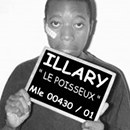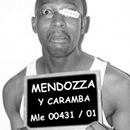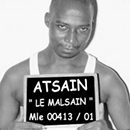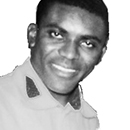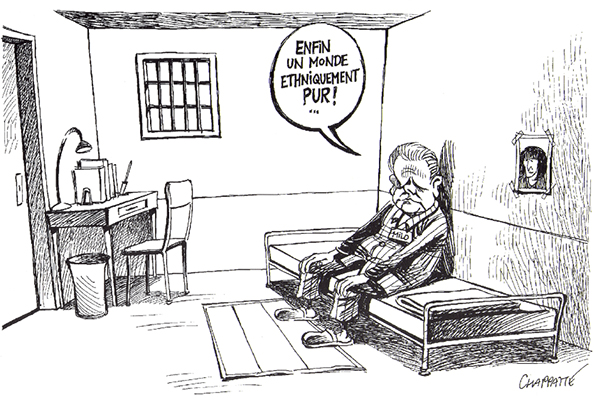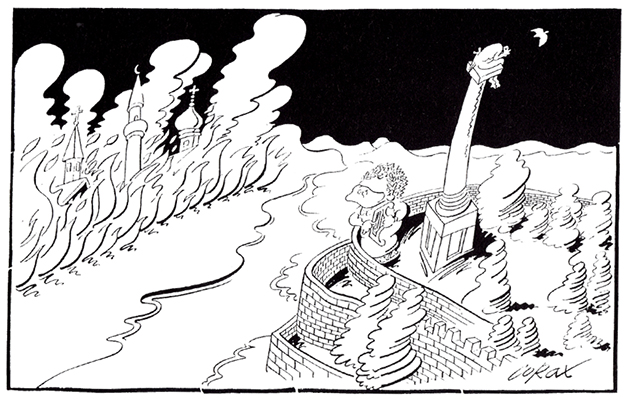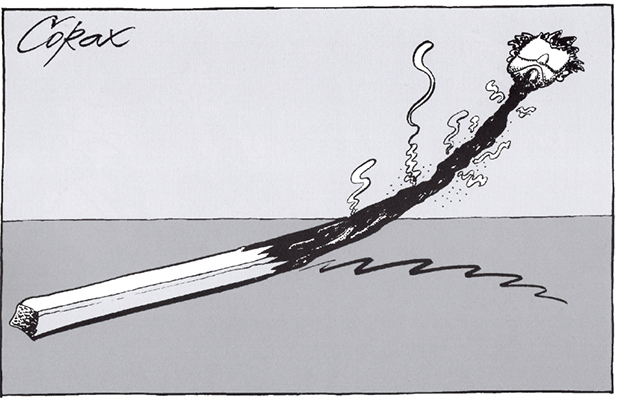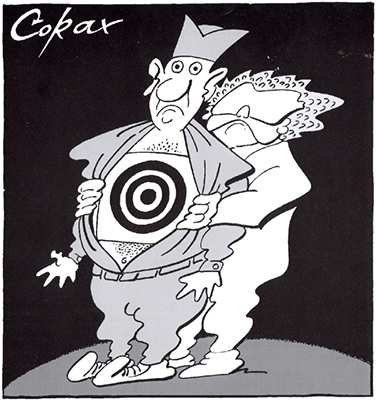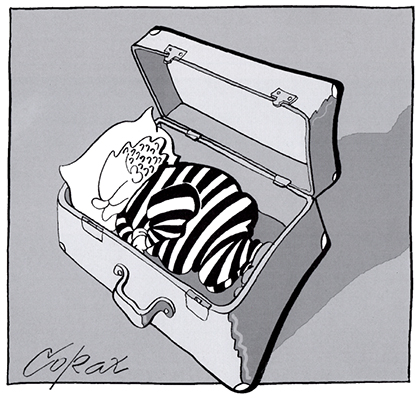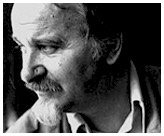"Crossed Pens"?
Such projects have taken place in Serbia, the Ivory Coast, Lebanon, Kenya, Guatemala, United States and Mexico. Beyond workshops, debates and exhibitions on the ground, each of these projects led to the creation of a specific object: a collection of drawings, press releases, video clips or even a calendar.
In addition, each edition of "Crossed Pens" triggers follow-up events in Switzerland: with the help of cultural actors in the country, such as the FIFDH in Geneva or la Maison du Dessin de presse in Morges, we bring the participating cartoonists from different countries to meet the Swiss people. Through events and exhibitions around political cartoons, Swiss audiences are exposed to the issues affecting other countries : ethnic conflict, urban violence, corruption and freedom of expression.
This site provides an overview of the projects realized until today. Discover, explore and come see us again: we are not finished with crossing pens!
© 2020 Plumes Croisées and Patrick Chappatte.
© 2020 Plumes Croisées and Patrick Chappatte.
Honduras, Salvador, Nicaragua et Guatemala ont connu dans la décennie écoulée des taux d’homicides qui les placent en tête des classements mondiaux de la violence. Dans leurs rues, on meurt autant ou plus qu’en Irak ou en Afghanistan. Une guerre s’y joue, dans le silence du monde.
La criminalité va du haut de l’échelle, où les cartels de la drogue pèsent de leur poids économique et politique sur l’Etat, jusqu’aux gangs de quartier, souvent soumis aux deux grandes bandes rivales, la mara Salvatrucha et la 18. Une violence sur fond d’inégalités sociales et d’exclusion. «Plumes croisées» a voulu mettre le projecteur sur l’Amérique Centrale, ce «trou noir de l’actualité», selon les termes de Chappatte.
Avec l’ambassade de Suisse à Guatemala Ciudad, le dessinateur suisse a réuni en mars 2012 des confrères du Honduras, du Salvador et du Guatemala autour du thème «Violence et corruption». Atelier professionnel enrichi par des experts, exposition itinérante et table ronde publique et ont débouché sur un calendrier mural, qui a été largement distribué, à travers l’ambassade de Suisse, dans les ONG et écoles des trois pays.
Le volet Suisse
En mars 2013, le public suisse put découvrir cette réalité à travers deux événements. A Genève, le Festival du film et forum international sur les droits humains consacra une soirée exceptionnelle, qui fit salle comble, au documentaire «Alma», confession d’une ex-gangster repentie, suivie d’un débat avec les dessinateurs Fo (Guatemala), Mc Donald (Honduras) et Alecus (Salvador), modéré par Chappatte. Parallèlement, à Morges, la Maison du dessin de presse présenta une exposition de 12 dessinateurs de presse d’Amérique Centrale.
Rafael Pineda es un caricaturista mexicano de Veracruz que estudió Comunicación Social en la UAM de Xochimilco. Actualmente es el director de la Revista El Chamuco. Ha publicado en diferentes diarios importantes como El Reforma, El Universal, El Economista, México Hoy. En estos momentos pública en el periódico Milenio. Además de trabajar como caricaturista, se dedica a la animación. Ha participado en diferentes documentales con sus caricaturas animadas. Su enfoque suele estar dirigido al tema de libertad de expresión. Premio Nacional de Periodismo 2016. Finalista y ganador del Premio Gabriel García Márquez.
Darío Castillejos es un caricaturista oaxaqueño licenciado en Derecho. Actualmente es el presidente de Cartónclub. Se dedica a la crítica de diferentes temas: políticos, sociales, religiosos, tecnológicos, culturales, entre otros. Ha ganado varios premios nacionales e internacionales. Durante tres años consecutivos ha sido galardonado con el Premio Nacional de Periodismo. Cuenta con un libro donde compila gran parte de su trabajo publicado por la editorial Almadía “Impresiones de un Mundo Desdibujado”. Actualmente publica en el periódico El Imparcial de Oaxaca, las revistas El Chamuco y Foreign Affairs.
Cintia Bolio es una caricaturista mexicana autodidacta enfocada en contenido político, feminista y crítico. Su trabajo es reconocido por su lucha constante por la equidad de género. Imparte talleres y ha participado en diferentes medios nacionales e internacionales, además ha publicado diferentes libros. Le han sido otorgados distintos premios nacionales e internacionales como reconocimiento a su trabajo como caricaturista. Fue la representante de Latinoamérica ante la ONU durante la creación de Cartooning For Peace.
Ángel Boligán es un caricaturista cubano/mexicano que reside en México desde 1992. Boligán publica en el diario mexicano EL UNIVERSAL hace más de 25 años, además colabora en revistas como El Chamuco, Foreign Affairs Latinoamérica y diversos medios internacionales, ganador de más de 183 premios internacionales y en 2 ocasiones del Premio Nacional de Periodismo de México. Es fundador de Cartónclub.
Maestro en Historia Social e Imagen por la Escuela Nacional de Antropología e Historia, especialista en caricatura política como fuente histórica y su transición del print al modelo digital. Premio excelencia periodística 2019 por la Sociedad Interamericana de Prensa (SIP), mención honorífica en la categoría de caricatura política. Miami, 2019.
2012-2013
-

Le projet s’ouvre par un atelier de deux jours sur les thèmes “Violence et corruption”, dirigé par Chappatte, et introduit par l’ambassadeur de Suisse Thomas Kolly (deuxième depuis la droite), entouré des experts Hélène Mack et Frank Larue – Guatemala Ciudad, 6 mars 2012
-

But de l’atelier: créer un calendrier mural illustré, qui sera distribué aux écoles et ONG de la région comme outil de sensibilisation. Les dessinateurs du Guatemala, du Salvador et du Honduras planchent – Guatemala Ciudad, 6 mars 2012
-

Deuxième jour d’atelier, dessinateurs à la pause. De gauche à droite, debout: McDonald, La Matraca, Otto, Filochofo, JotaCe. Assis: Alecus et Salomón – Guatemala Ciudad, 7 mars 2012
-

Deuxième jour d’atelier, dessinateurs à la pause. De gauche à droite, debout: McDonald, La Matraca, Otto, Filochofo, JotaCe. Assis: Alecus et Salomón – Guatemala Ciudad, 7 mars 2012
-

Montage de l’expo de dessins de presse sur les thèmes “Violence et corruption” avant son vernissage, dans les locaux de Flacso – Guatemala Ciudad, 8 mars 2012
-

Le volet suisse du projet, en mars 2013: une expo et un débat à Genève, une grande exposition à Morges.
-

Chappatte ouvre l’expo du Festival du film et forum international sur les droits humains à Genève, avec en guest stars les dessinateurs Alecus (Salvador), McDonald (Honduras) et Fo (Guatemala) – Genève, 4 mars 2013
-

Débat devant une salle comble au FIFDH lors d’une soirée spéciale Amérique Centrale, avec la projection du film “Alma, une enfant de la violence” – Genève, 4 mars 2013
-

Après avoir voyagé au Guatemala, au Honduras et au Salvador, l’exposition de dessins de presse “Violence et corruption” ouvre à la Maison du dessin de presse de Morges – Morges, 5 mars 2013
The murder rates in Honduras, El Salvador, Nicaragua and Guatemala over the past decade put these countries at the top of the world tables for violence. As many die on their streets as in Iraq or Afghanistan. A war is going on – that nobody talks about.
Crime runs from the top of the ladder, where the drug cartels use their economic and political weight against the state, right down to the neighbourhood gangs that are frequently controlled by two large rival groups, the Mara Salvatrucha and the 18. Violence has its roots in social inequality and exclusion. "Crossed Pens" wanted to turn the spotlight on Central America, this "black hole", as Chappatte puts it.
With the help of the Swiss Embassy in Guatemala City, Chappatte brought together fellow cartoonists from Honduras, El Salvador and Guatemala for an event entitled "Violence and corruption" in March 2012. This comprised a professional workshop with expert input, a roving exhibition and a public round-table discussion. A wall calendar was produced that was widely distributed by the Swiss Embassy to NGOs and schools in the three countries.
The Swiss dimension
In March 2013 two events were held that brought the situation in Central America to the attention of the Swiss public. In Geneva the International Film Festival and Forum on Human Rights organised a special evening at which the documentary film "Alma", the confessions of a former gangster, was shown to a full house. This was followed by a discussion with the cartoonists Fo (Guatemala), McDonald (Honduras) and Alecus (El Salvador), moderated by Chappatte. At the same time, in Morges, the Maison du dessin de presse (Editorial Cartoon Museum) presented an exhibition by 12 political cartoonists from Central America.
-

Couverture du Calendrier
-

Janvier
-

Février
-

Mars
-

Avril
-

Mai
-

Juin
-

Juillet
-

Août
-

Septembre
-

Octobre
-

Novembre
-

Decembre
-

“Ethnicité et la quête d’une identité nationale kényanne”: le titre de l’atelier de dessinateurs de Nairobi, qui ambitionne de traiter la brûlante question des rivalités claniques à travers le dessin.
-

Les dessinateurs se mettent au travail. But de l’atelier: créer des clips vidéo basés sur des dessins originaux. En trois jours! – Nairobi, 19 janvier 2010
-

Munene prêt à enregistrer son clup vidéo – Nairobi, 20 janvier 2010
-

En parallèle, un concours de dessins a été organisé par l’association des dessinateurs kényans et Plumes Croisées.
-

Troisième jour: exposition de dessins sur le thème de l’ethnicité et grand débat public à Nairobi, rassemblant tous les dessinateurs kényans, modéré par Chappatte. Les deux premiers vidéo-clips sont projetés – Nairobi, 21 janvier 2010
-

Le volet suisse: inauguration d’une expo de dessins kényans et projection des films au festival Morges-sous-Rire, en présence de la présidente de la Confédération, Doris Leuthard – Morges, 14 juin 2010
-

De gauche à droite: Chappatte, Gado, la présidente Doris Leuthard, Gathara, Ndula et Gammz – Morges, 14 juin 2010
-

Les dessinateurs de Nairobi, entourés de Plantu et Chappatte, sont reçus par Kofi Annan, qui fut le médiateur de la crise kényane en 2008 – Genève, 15 juin 2010
In 2007, in the context of a disputed presidential election in Kenya, a political battle between supporters of President Mwai Kibaki and his challenger, Raila Odinga, developed into a war between the Kikuyu and Luo tribes. It appeared that the poison of ethnicity, being spread by politicians, would prevail. Mediation by Kofi Annan led to a power-sharing arrangement.
In January 2010, when these events were still fresh, Chappatte and the Swiss Embassy in Nairobi brought together eight Kenyan cartoonists from all sides for a workshop, a public discussion and an exhibition entitled "Ethnicity and the quest for a Kenyan national identity". A drawing competition for young people was also held.
At the workshop, Chappatte put a challenge to his eight colleagues: everyone had two days to produce an original cartoon that would be captured on video. Used in an awareness-raising campaign in the country, these video clips are meant to be thought provoking – while raising smiles.
The Swiss dimension
Invited to exhibit at the “Morges-sous-rire” comedy festival in June 2010, the Kenyan cartoonists had the opportunity for exchanges with their Swiss counterparts and presented their work to the Swiss President Doris Leuthard. They were also received in Geneva by Kofi Annan, a key figure in the Kenyan crisis.
-

Comment parler du confessionnalisme et de la citoyenneté au Liban? Par le dessin, voyons! Expositions, table ronde et publication dans la presse libanaise sont au menu du projet.
-

On s’affaire au montage de l’exposition de dessins de presse sur le Liban , trois jours avant le vernissage, dans les locaux du théâtre Masrah Al Madina – Beyrouth, 15 mars 2009
-

Les dessinateurs Stavro et Chappatte présentent sur Future TV le but du projet: faire paraître dans tous les journaux libanais, pendant trois jours, une page réunissant les dessinateurs de tous bords. Le pari sera réussi – Beyrouth, 18 mars 2009
-

Le volet suisse, en juin 2009: les dessinateurs libanais Machaalani, Stavro, Bleibel et Hajo (de gauche à droite avec Chappatte au centre) inaugurent une grand exposition à Morges – Morges, 15 juin 2009
-

L’exposition de dessins est ouverte par le président de la Confédération Rudolf Merz, avec les dessinateurs suisses et libanais – Morges, 15 juin 2009
-

Après le conseiller fédéral Pascal couchepin à Berne, Kofi Annan reçoit les dessinateurs hôtes dans son bureau de Genève – Genève, 17 juin 2009
Divided by its history and along religious lines, and set in a geopolitical region fraught with tensions, Lebanon is an attempt at living together that is under constant threat. "Crossed Pens" set out to ask Lebanese about what divides them, what unites them, and what makes them fellow citizens, despite everything.
In March 2009, with the support of the FDFA and the Swiss Embassy in Beirut, the cartoonist Chappatte invited eight Lebanese colleagues from across the political spectrum to attend a workshop. Each signed three original drawings on the topics of clans and politics, confessionalism and rules for living together. These drawings gave rise to something unprecedented – works by all the cartoonists featured together over three days in some ten Beirut newspapers, including As Safir, An Nahar, L’Orient Le Jour, and The Daily Star.
In addition to this strongly symbolic gesture, a vernissage and round-table discussion were held at a theatre in central Beirut, bringing together cartoonists and the public. Overcoming barriers of politics and confessionalism, a collaborative artistic event was staged in the land of the cedars.
The Swiss dimension
The Swiss public was familiarised with the complex political situation in Lebanon in June of the same year, at an exhibition at the “Morges-sous-rire” comedy festival. The four Lebanese cartoonists present – Hassan Bleibel, Saad Hajo, Stavro Jabra and Jean Machaalani – were received by Federal Councillor Pascal Couchepin in Bern.
-

ARMAND HOMSI – An Nahar
-

BENÔIT DEBBANE – L’Orient-Le Jour
-

BENÔIT DEBBANE – L’Orient-Le Jour
-

ELIE SALIBA – Ad Diya
-

SAAD HAJO – As Safir
-

HASSAN BLAYBEL – Al Moustaqbal
-

JEAN MACHAALANI – Al Anwar
-

PIERRE SADEK – An Nahar
-

STAVRO JABRA – Al Balad, The Daily Star
2006
-

Patrick Chappatte et Olvis Dabley présentent à la presse locale le projet: un atelier de trois jours avec 10 dessinateurs, pour créer un recueil de dessins sur l’histoire récente et la situation politique de la Côte d’Ivoire.
Abidjan, 14 mars 2006 -

Cocktail à la résidence de Suisse: les invités écoutent le discours de bienvenue de l’ambassadeur Dominik Langenbacher.
Abidjan, 16 mars 2006 -

Les dessinateurs ivoiriens en plein atelier. Leur but: rassembler les dessins de presse les plus pertinents en vue de constituer un album-témoignage sur les crises politiques du pays.
Abidjan, 17 mars 2006 -

Clôture de l’atelier: pendant trois jours, des dessinateurs de journaux affiliés à des partis politiques rivaux, voire ennemis, ont collaboré tous ensemble. Là où les mots fâchent, le dessin a permis d’échanger.
Abidjan, 18 mars 2006 -

Patrick Chappatte sur le plateau du journal de 20 heures de la télévison publique ivoirienne.
Abidjan, 19 mars 2006 -

Conférence de presse de bilan, avec Olvis Dabley, Patrick Chappatte et l’ambassadeur de Suisse Dominik Langenbacher. Le recueil de dessins de presse «On va où là», issu de l’atelier, paraîtra quelques semaines plus tard.
Abidjan, 20 mars 2006
In 2006 Ivory Coast was split in two: rebels opposed to the presidency of Laurent Gbagbo held the northern half of a country torn apart by political ambitions, economic interests and clan loyalties. Today those rebels are in charge in Abidjan, and Gbagbo has been handed over to face international justice. But the resentment remains.
Reflecting the state of the country, the Ivorian press has often been divided, stirring up the hostility of one side against the other. Editorial cartoonists have been unwilling participants in this feud. This was the situation in March 2006 when a local cultural agency supported by the Swiss Embassy in Abidjan invited the cartoonist Chappatte to host a workshop of Ivorian cartoonists as well as a series of public round tables. The resulting collection of drawings, "On va où là" ("Where are we heading?"), is a satirical view of the crisis in Ivory Coast. A follow-up volume was published in 2012.
A dialogue in the "Crossed Pens" series was initiated - a dialogue in the sense of a lively exchange of views and of witty observations.
The Swiss dimension
The Swiss public were able to view the interaction between these Ivorian cartoonists at the "Morges sous rire" press cartoon festival in June 2006. The works produced, volumes 1 and 2, were then presented at the Geneva Book and Press Fair, which devoted exhibitions, discussions and gatherings to them. This was a chance for the Swiss to discover there is more to Ivory Coast than cocoa beans.

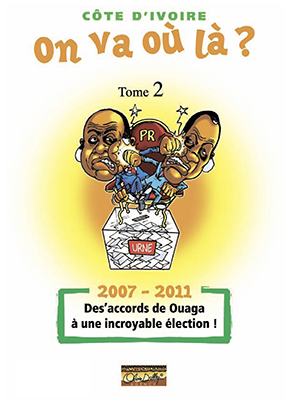
At that time the Swiss Embassy in Belgrade came up with the bold initiative to organise a press cartoon exhibition on the wars in Yugoslavia. In place of words that injure and divide, it sought to achieve an exchange of views in the form of drawings, and to call for an examination of the country's recent history – without appearing to do so.
Held in a gallery in central Belgrade, the exhibition bringing together Corax, a leading Serbian caricaturist and Milosevic opponent, and Patrick Chappatte, a Swiss cartoonist working for the international press, attracted 1,000 visitors daily. A round-table discussion held in the gallery was an opportunity for informative and lively debate.
This simple idea, to use cartoon drawing to facilitate discussion in a conflict setting, was to form the basis of all the "Crossed Pens" projects.
Il publie encore ses caricatures aujourd’hui dans différentes publications et notamment sur internet.






